This Bristol Racer Had a Face Only a Frenchman Could Love
Le Mans is famous for its length. At 24 hours, it’s a long race. At 6 km (3.7 miles), its main straightaway was the longest in the world. The high, sustained speeds achieved there meant aerodynamics were paramount, with cars’ bodywork tweaked and sculpted to squeeze out every last mph. Many streamlined cars took shape, particularly from the 1930s through the 1960s, with Le Mans in their sights. Many were beautiful. The Bristol 450 was not.
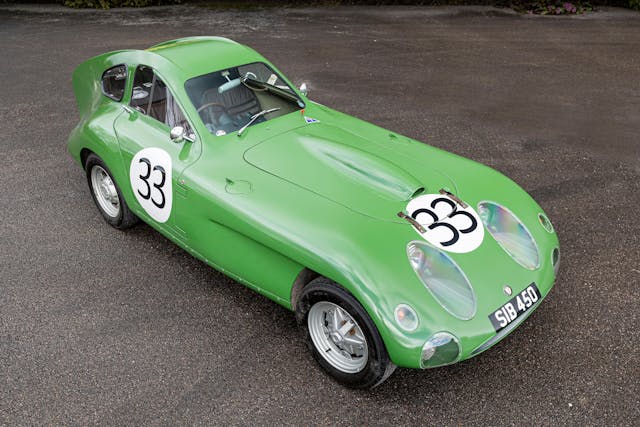
The 450 coupe is truly one of the goofiest cars of any kind, anywhere. And despite it winning its class at Le Mans, Bristol figured it was a better idea to scrap it than preserve a piece of history. The English racer had a face only a French car enthusiast could love, and a man named Olivier Boré decided to painstakingly and faithfully recreate another 450 coupe—the one you see here—over several years. It cost £273,635.40 ($338,490) to build. It sold for £172,500 ($213,384) at this year’s Goodwood Members’ Meeting auction.
Bristol Cars was a division of the Bristol Aeroplane Company. It started right after World War II to keep the company healthy, since the RAF would no longer be needing gobs and gobs of fighters and torpedo bombers. With Britain victorious in the war and Germany in ruins, Bristol was also able to quickly acquire the rights to several prewar BMW designs, including the brilliant 2.0-liter straight-six from the 328.
A few years later, Bristol became one of many carmakers seduced by the marketing and promotional potential of winning races. They eyed the 24 Hours of Le Mans, ignoring every other race except for Reims, which mostly served as a test run for Le Mans. They adapted the chassis from an ERA F2 car into a sports car configuration, and built up a coupe body around it. Being part of an airplane company, the designers had easy access to a wind tunnel (a rare privilege in the early 1950s). What they came up with was equal parts slippery and hideous. But with 140-155hp from the BMW-derived Bristol engine and a weight of just 1500 pounds, it could hit 140 mph on the Mulsanne straight. For the 1953 race, though, the new Bristols were out of the running by half distance due to engine trouble.
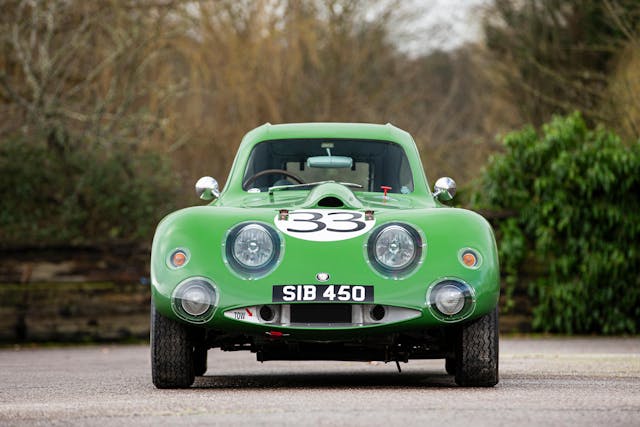
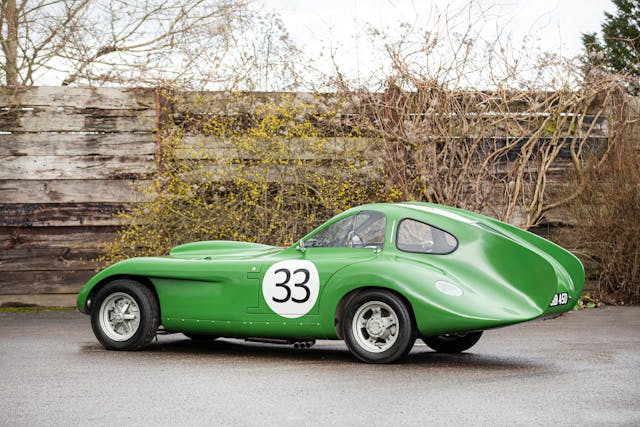
For 1954, the bodies were revised and still ugly, but smoothed out significantly from the year before. They had plenty of striking features, like the twin fins that run down the roof to the tapered tail, as well as the long hood, scooped and bulged to clear the famously tall Bristol engine. But the proportions were just odd, resulting in a car that looked strange in different ways from different angles. Regardless, Bristol had a much better go of it at Le Mans this time. Although they ran behind an Italian OSCA for much of the race, all the OSCAs were forced to retire and Bristol finished 1-2-3 in the 2.0-liter category and 6-7-8 overall.
For the 1955 race, Bristol further revised the bodywork. It looked a little more conventional, mostly because Bristol had cut the roof off and added a tail fin. For quicker pit stops, Bristol also came up with a multi-barrel wrench for removing and reapplying all the wheel nuts simultaneously. In the race, their main competition was a French Gordini, but again reliability went Bristol’s way and the team finished 1-2-3 in class and 7-8-9 overall. Of course, that success was overshadowed by the ghastly crash on the 35th lap that killed 83 spectators and injured over 120 more. After the 1955 race, Bristol’s managing director Sir George White donated the team’s prize money to a charity set up for the crash’s victims, and the race team shut its doors at the end of the season. Bristol cars were shifting focus from performance toward luxury, anyway.
Only four or five of the 450 Le Mans chassis were completed, and legend has it that Bristol picked the best one, built it up using the best components from all of them, and scrapped the rest. The sole remaining 450, a roadster, still exists.
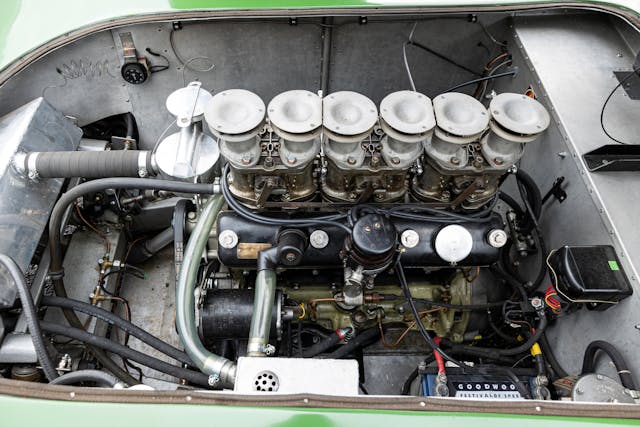

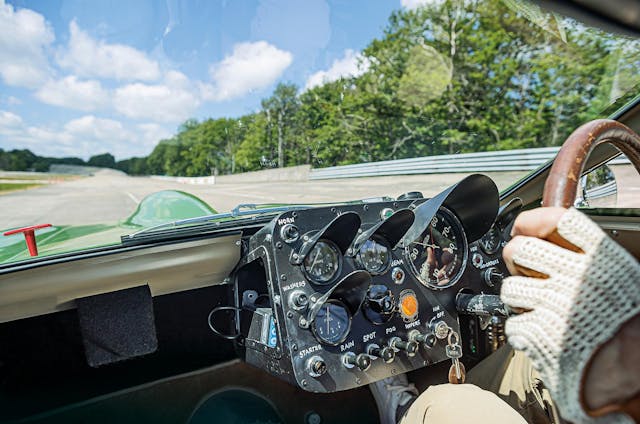
Meanwhile, Olivier Boré was fascinated with aerodynamic cars and streamliners of old. But, as he told Classic & Sports Car, “the cars that appealed to me were either impossible to find or too costly.” We can empathize, Olivier. Instead of complain, though, he commissioned a Brit named Andrew Mitchell to recreate one of the 450 coupes from the 1954 Le Mans race, nearly from scratch.
They found a Bristol 406 chassis as well as a “12-pipe” engine built to accept the three twin-choke carburetors of the race car instead of the single-choke Solexes of Bristol’s road cars. The race cars used a transaxle but a correct one couldn’t be found, so they used an overdrive-equipped Bristol 4-speed fitted to the engine, and fitted disc brakes instead of the period Alfin drums. Cast-alloy wheels of the same design as the originals were remanufactured. Then, using around 300 period photos, Boré hired 3D engineers to create a 3D image of the car, and a coachbuilder to create a body from scratch in aluminum over the course of two years. Curved Plexiglass windows were remanufactured, and an MGB windshield cut to fit. For paint, Boré brought color photos to Kodak for analysis and applied the period-correct light shade of green, which looks just right on the 450’s frog-like face. An original 450 steering wheel, tach and speedo were located, and fitted into the Bristol’s clearly aircraft-inspired cockpit.
The end result is what Bonhams accurately described as “as close to the real 450LM Coupe as anyone will ever get.” For the auction, its presale estimate was £140,000-£240,000. As someone else’s passion project, it sold for less than it cost to build, but that shouldn’t have surprised anybody, seller included. This whole endeavor was clearly never about money, anyway. Resurrecting a piece of automotive history, even a butt-ugly one, is always a good thing. We’re glad someone brought the 450 back from the dead, regardless of how it looks or what it sold for.
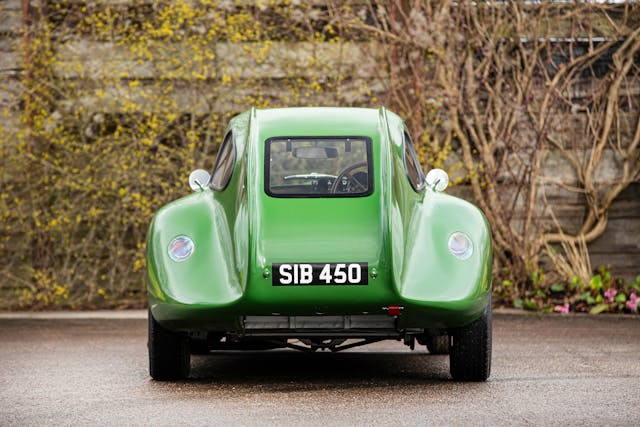
***
Check out the Hagerty Media homepage so you don’t miss a single story, or better yet, bookmark it. To get our best stories delivered right to your inbox, subscribe to our newsletters.
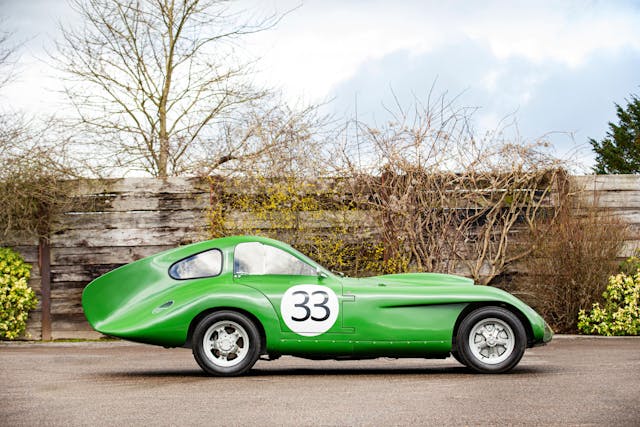


Pretty cool, I think.
And as far as ugly- beats anything made by BMW in recent years, so there is that.
TRUE!
With its extended rear and fins it looks like a kids toy car. You can almost imagine picking it by the tail and giving it a shove across the basement floor.
Best looking part of this car is the engine.
I agree with both of you, it’s not pretty, but the inline 6 looks good.
I had a Dinky Toy model of that as a little kid; wonder what those are worth,
You could always pay someone to re-create one and then send it to auction.
It looks like it’s proportions inspired Bill Thomas on the cheetah.